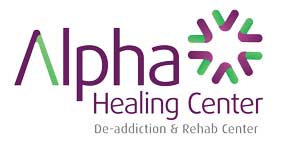Marijuana is the dried leaves, stems, flowers, and seeds from Cannabis. It contains the mind-altering ingredient delta-9-tetrahydrocannabinol (THC). Marijuana is the most commonly used addictive drug after smoking and alcohol. Although people think that it is less harmful than smoking, medical research proves that marijuana can lead to various physical and psychological health issues. Following are the primary health problems caused by smoking weed or marijuana.
Central nervous and cognition related problems
Our body naturally produces cannabinoids (THC), which influences pleasure, concentration, cognition, memory, sensory and time perception, and movement coordination. The increased amount of THC in the central nervous system upsets the homeostasis of the brain environment.
Specifically, at an early age, the use of marijuana is associated with delayed brain development and memory problems. Moreover, cannabis use increases the risk of depression, suicidal ideations, and psychotic symptoms, including delusions, hallucinations, disorganized thought patterns, and speech.
Cardiac issues
Within fifteen minutes of smoking weed, your heart rate increases, and it makes your heart works harder. This effect can last for almost three hours, and this overwork by the heart can lead to a heart attack. Research studies have also shown that the risk of heart attack increases five times within the first hour of smoking weed.
The chemical substances in Cannabis increase the chances of heart failure and atrial fibrillation, which is a heart rhythm disorder. Increased use of marijuana also increases the risk of stroke compared to those who don’t smoke weed.
Impact on bones health
Regular use of weed is also linked to reduced density of bones. Those who use heavy marijuana have 5% lower bone density than those who don’t use marijuana. This decreased density of bones can lead to bone-related health issues like osteoporosis.
However, the results are controversial. Some studies indicate that THC and other cannabis-related ingredients fasten the bone healing process and increase bone strength after breakage. But, these are not well-established facts, and you must not risk your health based on this empirically weak fact.
Respiratory problems
Smoking marijuana is considered less harmful than smoking tobacco, but weed contains harmful ingredients. The use of marijuana can cause acute bronchitis, chronic coughing, phlegm, wheezing, and breath shortness. Moreover, smoking marijuana is also linked with chronic obstructive pulmonary disease, lung infections, and other respiratory issues.
The carcinogenic effect of marijuana
Marijuana smoke contains various carcinogens and three times more tar than tobacco smoke. Thus, it is logical to assume that smoking marijuana can cause lung and throat cancer. A single research study has established the link between marijuana smoking and head or neck cancer. But any other research failed to prove this association.
Smoking weed in pregnancy
Marijuana can pose serious health risks to pregnant mothers, fetuses, and newborn babies. Expectant mothers who smoke weed are at increased risk of anemia, confusion, and forgetfulness during pregnancy. Smoking weed increases the risk of stillbirth. After birth, the baby is likely to be underweight and can have developmental and neurological issues like hyperactivity, impulsivity, problems with executive functioning, attention, and memory formation.
These are harmful impacts of taking weed or marijuana in any form for an extended period. However, if you want to quit this substance and make your life healthier and better, below are some essential steps for you to take.
How to stop smoking weed?
• The first step is to consult your doctor, counselor, or therapist. He can give you guidance on how to best deal with this problem.
• You can take some steps to change your friends and company. Having the same friends around you that still smoke can weaken your will.
• Remove all the paraphernalia from your surroundings, house, and office.
• Identify your triggers, i.e., stress, anxiety, overwork, loneliness, or exhaustion, and try to avoid these triggers.
• Find some effective distractions for yourself in which you can indulge to deal with cravings and triggers. Your distraction can be watching tv, reading a book, cooking, cleaning, talking to a loved one, going out in nature, volunteering, or anything that can take your mind off drugs.
• Finally, find some meaningful goals and purpose in your life. This can be an academic, professional, or personal goal. This will give you a purpose and motivation in your life.
However, consulting a doctor or therapist is always the best option if these steps are not working for you. Seek professional help as soon as possible for yourself and the sake of your loved ones.
References
Mack A, Joy J. (2000). Marijuana as Medicine? The Science Beyond the Controversy. Washington (DC): National Academies Press (US). 3, HOW HARMFUL IS MARIJUANA? Available from: https://www.ncbi.nlm.nih.gov/books/NBK224396/
Archie, S. R., & Cucullo, L. (2019). Harmful effects of smoking cannabis: a cerebrovascular and neurological perspective. Frontiers in pharmacology, 10, 1481. https://doi.org/10.3389/fphar.2019.01481
Filbey, F. M., Aslan, S., Calhoun, V. D., Spence, J. S., Damaraju, E., Caprihan, A., & Segall, J. (2014). Long-term effects of marijuana use on the brain. Proceedings of the National Academy of Sciences, 111(47), 16913-16918. https://doi.org/10.1073/pnas.1415297111






